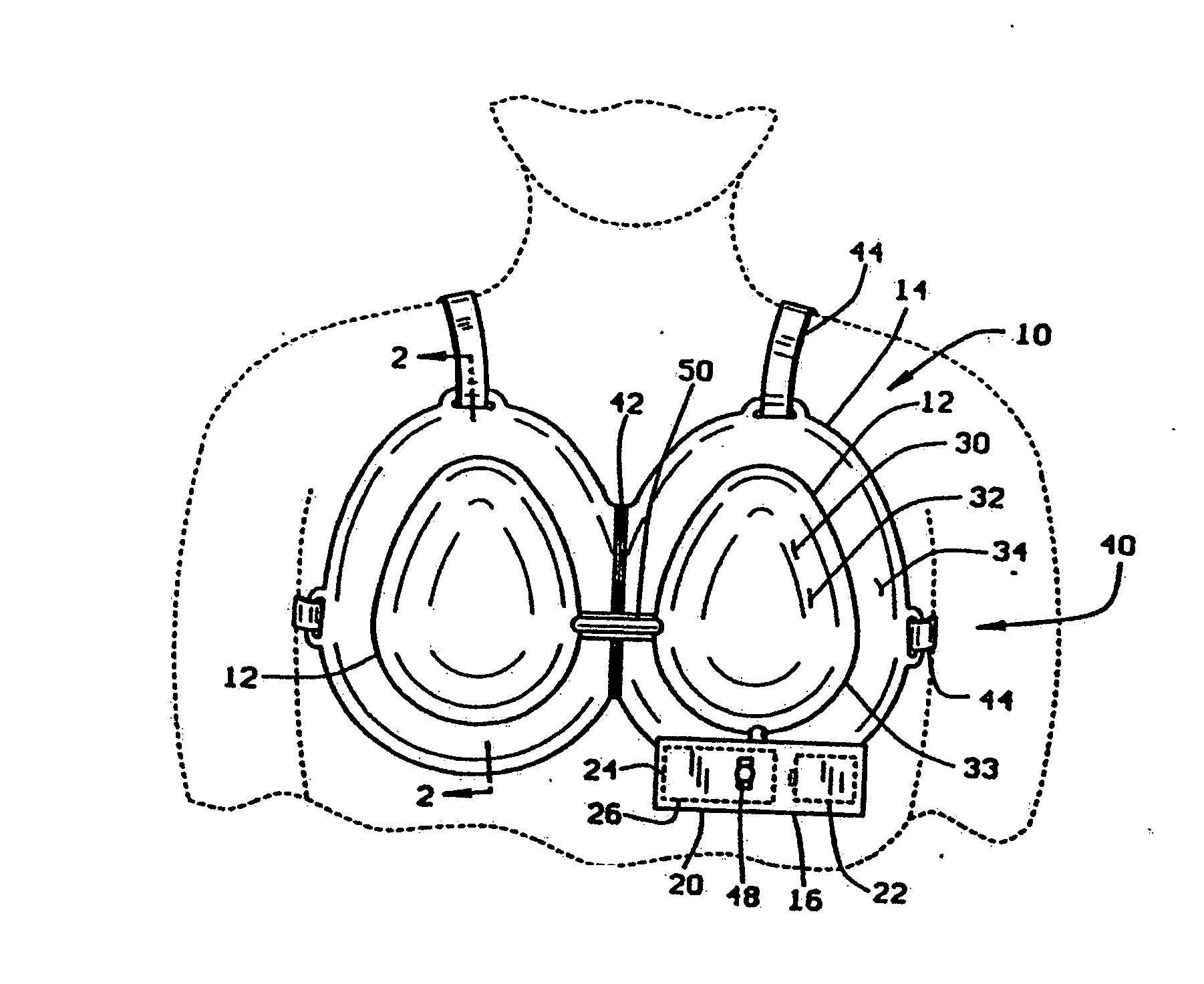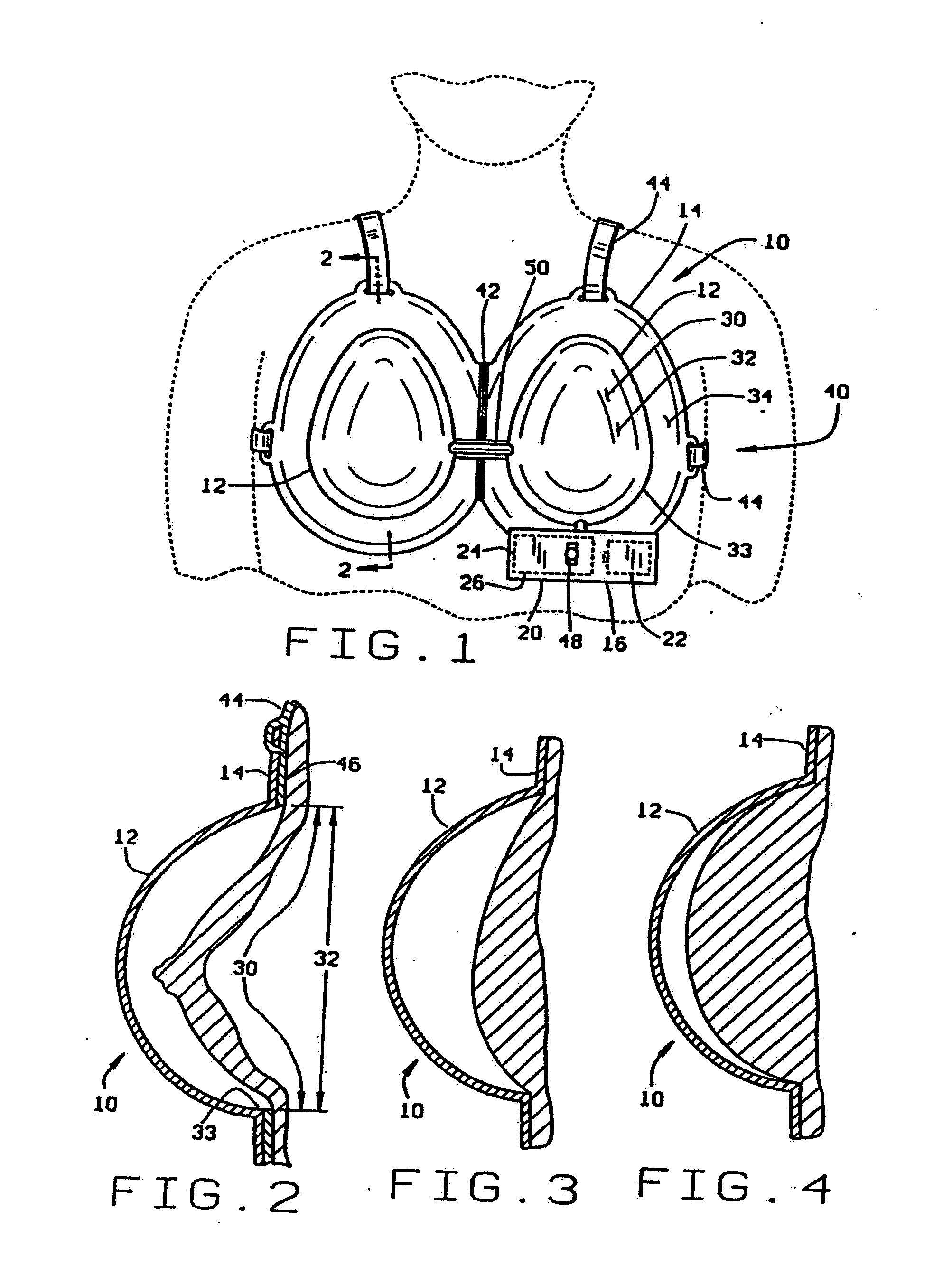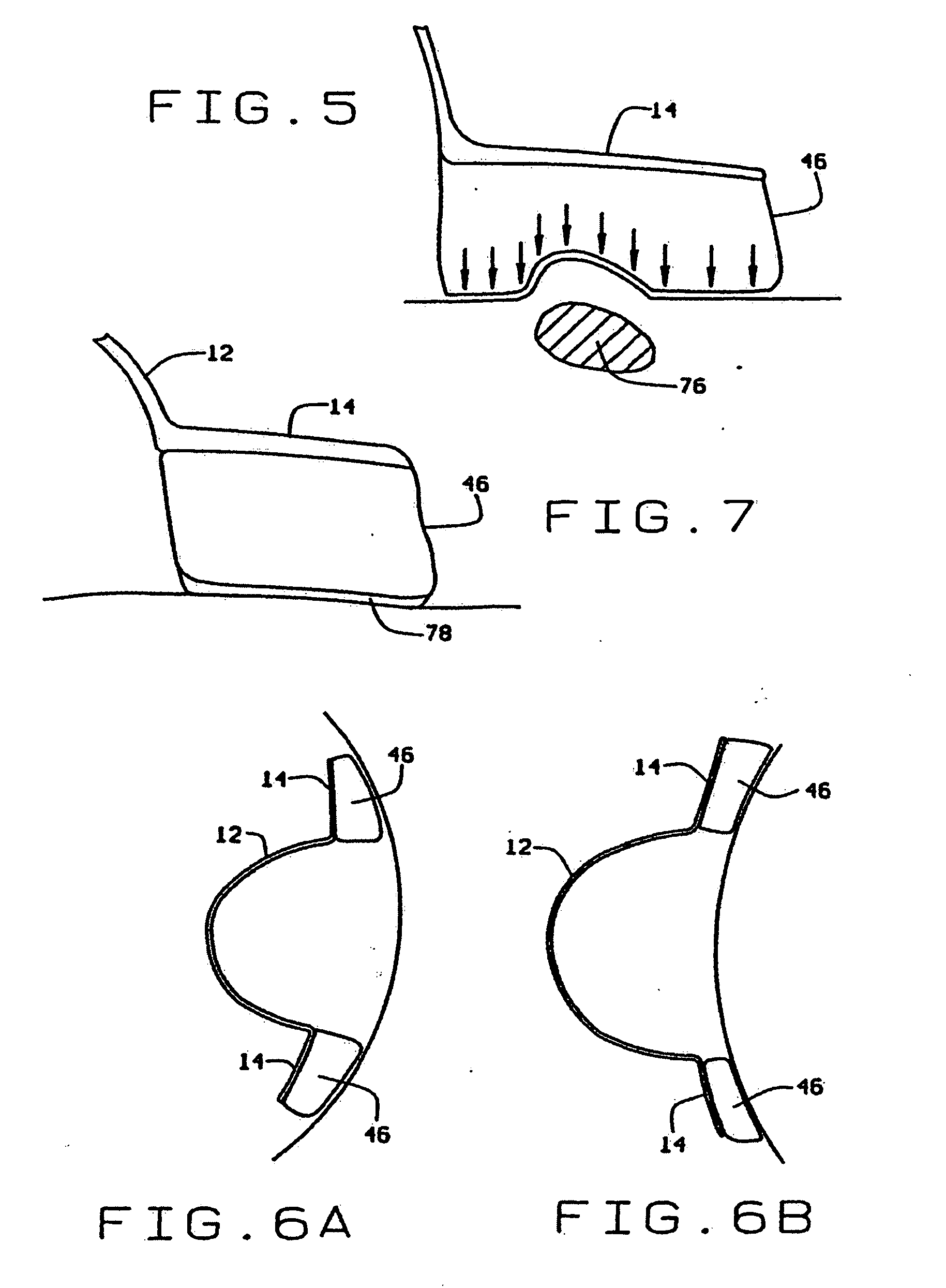Method and apparatus for inhibiting the growth of and shrinking cancerous tumors
a cancerous tumor and tumor growth technology, applied in the field of methods and apparatus for inhibiting the growth and shrinking of cancerous tumors, can solve the problems of reducing the desirability of implants, increasing the likelihood of complications associated with procedures, and invasive techniques, so as to reduce the cost of surgery, many people are unable to have their abnormalities corrected or enhanced, and the effect of reducing the likelihood of complications
- Summary
- Abstract
- Description
- Claims
- Application Information
AI Technical Summary
Benefits of technology
Problems solved by technology
Method used
Image
Examples
Embodiment Construction
[0051] One embodiment of the soft tissue enlargement apparatus 10 is generally comprised of a dome 12 having a rim 14 and a vacuum pump assembly 16 for creating a vacuum within the dome. Although the vacuum pump assembly 16 may be a separate hand-held pump in one variant embodiment, in one preferred embodiment the vacuum pump assembly 16 is a self-contained vacuum pump 20 with an independent power source 22, pressure sensor 24, and servomechanism 26 for driving, regulating and controlling the vacuum pump 20.
[0052] Regulation of the vacuum within the dome is essential to prevent contusions caused by rupturing capillaries adjacent the surface of the skin. Medical data suggest that these contusions will not occur if vacuum within the dome is maintained at less than about 20-25 mmHg, at least on a continuous basis. Thus, the vacuum pump 20 must be regulated to control the vacuum within the dome to within this limit presuming a protocol involving extended wearing at continuous pressure ...
PUM
 Login to View More
Login to View More Abstract
Description
Claims
Application Information
 Login to View More
Login to View More - R&D
- Intellectual Property
- Life Sciences
- Materials
- Tech Scout
- Unparalleled Data Quality
- Higher Quality Content
- 60% Fewer Hallucinations
Browse by: Latest US Patents, China's latest patents, Technical Efficacy Thesaurus, Application Domain, Technology Topic, Popular Technical Reports.
© 2025 PatSnap. All rights reserved.Legal|Privacy policy|Modern Slavery Act Transparency Statement|Sitemap|About US| Contact US: help@patsnap.com



